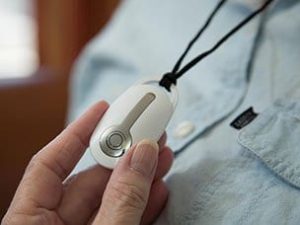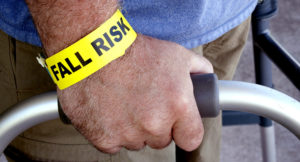Medical Alert Systems with fall detection – Falls are one of the leading causes of injury among seniors, and when a fall occurs, it’s critical to get emergency help immediately. Medical alert systems with fall detection are designed to do just that, providing seniors with a reliable, automatic way to get assistance when they need it most. These systems can detect falls in real-time using built-in sensors in wearable devices like pendants or bracelets. When a fall is detected, the system triggers an auto alert to emergency contacts or a 24/7 monitoring center, ensuring that help is on the way even if the senior is unable to press the emergency button themselves.
Medical Alert Systems with Fall Detection: Ensuring Safety for Seniors !
When it comes to ensuring the safety of seniors, especially those who live alone or have a history of falls, medical alert systems with fall detection offer a vital layer of protection. These devices provide peace of mind to both seniors and their families, ensuring that help is available at the press of a button or even automatically, if a fall is detected. Whether you’re looking for 24/7 monitoring, GPS tracking, or no landline needed features, modern medical alert systems come with a range of options to meet every need.
In this guide, we’ll walk through the top 12 medical alert systems with fall detection, helping you compare different models, features, and pricing plans. We’ll also explore which options offer the highest rating for reliability, safety, and value, so you can make an informed decision for your loved one.
Features to Look for in Medical Alert Systems with Fall Detection
Before choosing a system, it’s important to consider several key features that can make a significant difference in performance and reliability:
Automatic Fall Detection: The ability for the device to detect falls without the user needing to press a button is a crucial feature for seniors who may be unable to react quickly after a fall.
GPS Tracking: For those who are active and go out often, GPS functionality can provide peace of mind by allowing caregivers or emergency responders to pinpoint the location of the user in case of an emergency.
No Landline Needed: Many systems operate without a landline, using cellular or Wi-Fi networks instead. This flexibility makes it easier for users to stay connected at all times, especially in homes without a landline.
24/7 Monitoring: Continuous monitoring is essential, ensuring that help is always available at any time of the day or night.
In-Home and On-the-Go Coverage: Some systems are designed for use both in-home and on the go, providing GPS tracking for users who want the freedom to go out and about while staying safe.
Wearable Options: Bracelets and pendants are the most common wearables for medical alert systems, but some models also offer wall-mountable devices or auto contacts in the event of an emergency.
Pricing Plans: Make sure to compare different pricing plans and check for deals that might offer significant savings, especially if you’re looking for a system without a monthly fee.
Top 12 Best Medical Alert Systems with Fall Detection
Life Alert
One of the most recognizable names in the industry, Life Alert offers fall detection services that automatically trigger alerts when a fall is detected. Known for their 24/7 monitoring and reliable service, Life Alert is a top choice for seniors who want dependable emergency help when needed. Life Alert’s pendant is lightweight and can be worn around the neck, ensuring ease of use. The system also offers in-home and on-the-go options with GPS tracking.
ADT Health
ADT Health is a trusted provider offering customizable medical alert systems with fall detection. Their emergency help is available 24/7, and the system is designed for easy installation with no landline required. With a choice of pendant or bracelet wearables, ADT Health is a great option for seniors seeking peace of mind. Their monitoring system has the highest rating for reliability and support.
Bay Alarm Medical
Bay Alarm Medical offers one of the best medical alert systems with fall detection, featuring automatic alerts and GPS tracking. They have several plans that cater to both in-home and on-the-go users, and their no landline needed option is perfect for those who want flexibility. Bay Alarm’s system is equipped with 24/7 monitoring and offers both wearable devices and wall mountable units.
Medical Guardian
With a focus on safety and dependability, Medical Guardian offers a variety of medical alert systems with fall detection. Their devices are designed with built-in sensors to detect falls and notify emergency contacts or monitoring centers. GPS tracking is available for users who need to stay connected while outside. Medical Guardian also offers the option of no monthly fee and flexible pricing plans, allowing you to compare different options based on your budget.
Medical Care Alert
Medical Care Alert provides seniors with a variety of medical alert systems that include fall detection technology. Their pendant and bracelet options are designed for comfort and ease of use, while their monitoring centers are available 24/7. Medical Care Alert is ideal for seniors who want peace of mind and quick access to emergency assistance, and the company also offers several pricing plans to choose from.
GreatCall Lively Mobile Plus
The GreatCall Lively Mobile Plus is a lightweight wearable device with automatic fall detection and GPS tracking. This device provides reliable emergency help without the need for a landline. The system includes access to 24/7 monitoring and allows users to communicate directly with an operator via a built-in speaker and microphone. GreatCall also offers no monthly fee options for users who prefer a more budget-friendly plan.
LifeFone
LifeFone is known for its reliable fall detection technology and excellent customer support. Their wearable pendants are available in a variety of colors, making them both functional and stylish. LifeFone’s systems provide automatic alerts when a fall is detected, and they offer in-home and on-the-go solutions. With 24/7 monitoring and the ability to auto contacts in case of an emergency, LifeFone offers peace of mind at an affordable price.
Connect America
Connect America offers medical alert systems with fall detection, GPS tracking, and 24/7 monitoring. Their pendants and bracelets come with easy-to-use features and auto alert functions. Connect America is known for providing seniors with exceptional customer service and multiple pricing plans, so users can choose the option that best suits their needs.
Tunstall Americas
Tunstall Americas is another top contender in the medical alert system industry, offering systems with advanced fall detection technology. Their systems are equipped with auto alerts, allowing seniors to quickly contact emergency services if they experience a fall. The company offers wearable options, including pendants and bracelets, and provides 24/7 monitoring with options for both in-home and on-the-go users.
MobileHelp
MobileHelp’s medical alert system is a versatile option with fall detection capabilities and GPS tracking. Their pendant and bracelet designs are comfortable and easy to wear, and the system is fully equipped to handle emergency alerts at any time. MobileHelp also offers a no landline needed feature, allowing users to stay connected without the need for a traditional phone line.
One Call Alert
One Call Alert provides reliable medical alert systems with fall detection, offering both pendant and bracelet styles. Their 24/7 monitoring service ensures that seniors can get emergency help when needed, while the auto contacts feature allows caregivers to be notified in case of an emergency. With a wide variety of plans and pricing options, One Call Alert is an excellent choice for seniors seeking a customizable medical alert system.
LifeStation
LifeStation offers affordable medical alert systems with fall detection and 24/7 monitoring. Their wearable options, including pendants and bracelets, come with GPS tracking, ensuring that help is always available, whether at home or on the go. LifeStation provides flexible pricing plans to accommodate different budgets, and they have no monthly fee options for those who need a more cost-effective solution.
To sum up:
When selecting a medical alert system with fall detection for yourself or a loved one, it’s important to compare features, pricing, and services to find the best fit. Systems with automatic fall detection, GPS, 24/7 monitoring, and no landline required provide the highest level of safety and reliability.
Life Alert, ADT Health, Bay Alarm, and Medical Guardian are just a few of the top options available that ensure seniors have access to emergency help whenever they need it. With the added bonus of peace of mind for families and caregivers, medical alert systems with fall detection are a great investment in safety and well-being.
ALSO REFER
Undergraduate Medicine Scholarships for International Students
Construction Consulting Firms in the USA
Fire Protection Companies in Texas
Commercial Property Management Companies in Florida
Reputation Management Software for Hotels
Property Management Companies in Philadelphia
Mobile Phone Parts Suppliers in the USA
Fuel transport Companies in California

